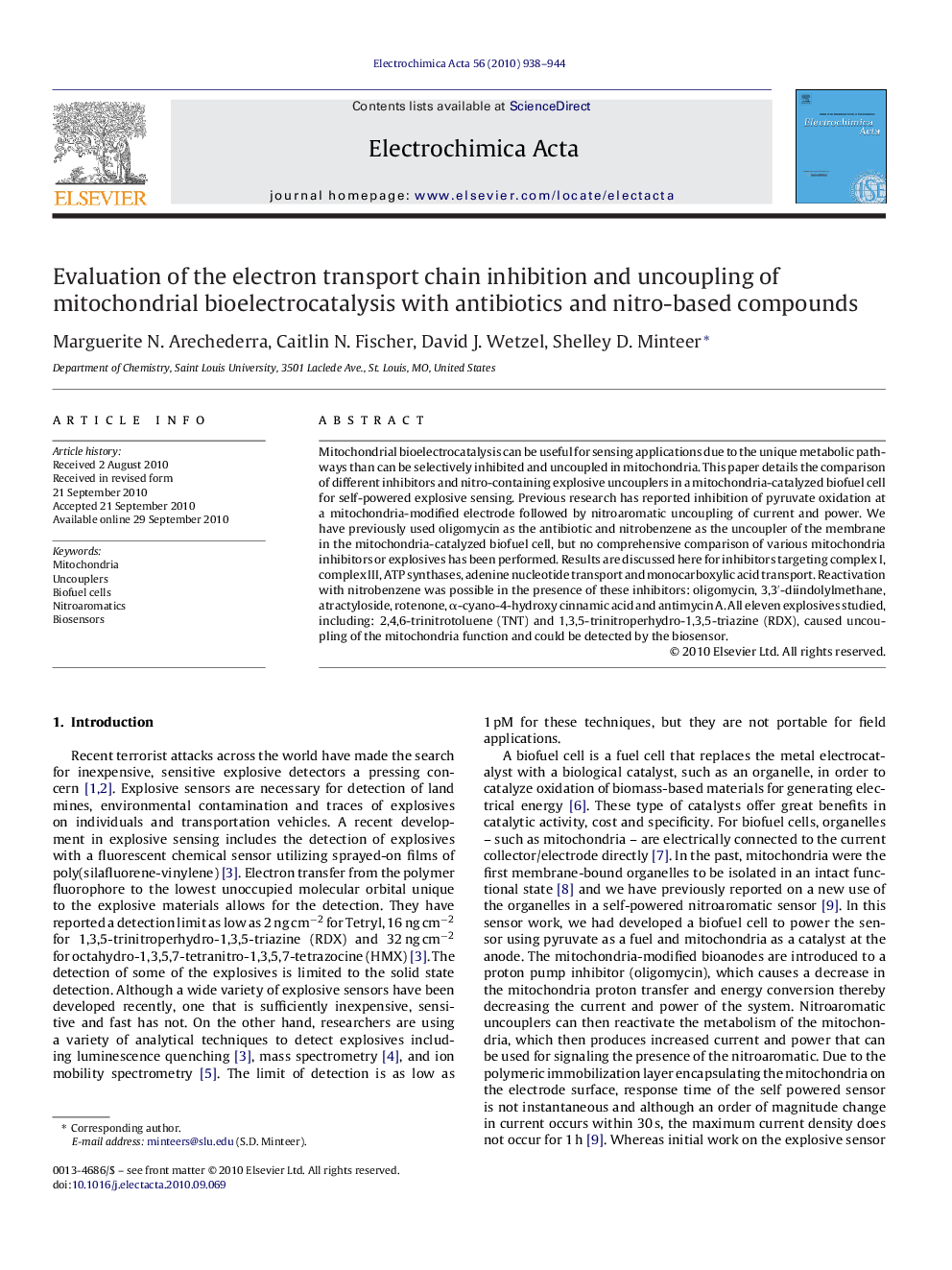| Article ID | Journal | Published Year | Pages | File Type |
|---|---|---|---|---|
| 191692 | Electrochimica Acta | 2010 | 7 Pages |
Mitochondrial bioelectrocatalysis can be useful for sensing applications due to the unique metabolic pathways than can be selectively inhibited and uncoupled in mitochondria. This paper details the comparison of different inhibitors and nitro-containing explosive uncouplers in a mitochondria-catalyzed biofuel cell for self-powered explosive sensing. Previous research has reported inhibition of pyruvate oxidation at a mitochondria-modified electrode followed by nitroaromatic uncoupling of current and power. We have previously used oligomycin as the antibiotic and nitrobenzene as the uncoupler of the membrane in the mitochondria-catalyzed biofuel cell, but no comprehensive comparison of various mitochondria inhibitors or explosives has been performed. Results are discussed here for inhibitors targeting complex I, complex III, ATP synthases, adenine nucleotide transport and monocarboxylic acid transport. Reactivation with nitrobenzene was possible in the presence of these inhibitors: oligomycin, 3,3′-diindolylmethane, atractyloside, rotenone, α-cyano-4-hydroxy cinnamic acid and antimycin A. All eleven explosives studied, including: 2,4,6-trinitrotoluene (TNT) and 1,3,5-trinitroperhydro-1,3,5-triazine (RDX), caused uncoupling of the mitochondria function and could be detected by the biosensor.
